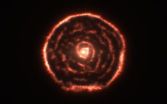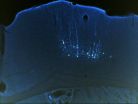Parent-clinician communication about children's drug reactions needs improvement
2012-10-11
(Press-News.org) Many parents are dissatisfied with communication regarding adverse drug reactions experienced by their child, and the implications of such reactions for the child's future use of medicines, according to a new study published Oct. 10 in the open access journal PLOS ONE by Bridget Young from the University of Liverpool, UK and colleagues.
The researchers interviewed parents of 44 children who had a suspected adverse drug reaction for their study. They found that the majority of parents in their study were dissatisfied with the clarity and timing of communications from doctors and nurses, and were unsure whether a child's reaction to a drug affected future use of the medicine.
Parents whose children had cancer were the exception to this, as most of them expressed confidence in the way their clinicians explained the risks associated with medicines and managed side effects that developed during their child's treatment. In addition, the researchers observed that parents linked symptoms to medicines using reasoning similar to that used by clinicians to evaluate the side effects of medicines.
According to the authors, there are currently few guidelines to help clinicians communicate with families about side effects of drugs prescribed to children, which is likely to create confusion for parents of sick children who suffer adverse drug reactions.
The authors suggest that this similar reasoning used by clinicians and parents to link children's side effects to drugs could be used as a starting point to improve communication between clinicians and parents about children's' medications. Bridget Young said "Some parents are very distressed by the way clinicians deal with suspected side effects to common medicines and we are now working with clinicians to work out the best way to improve things".
INFORMATION:Citation: Arnott J, Hesselgreaves H, Nunn AJ, Peak M, Pirmohamed M, et al. (2012) Enhancing Communication about Paediatric Medicines: Lessons from a Qualitative Study of Parents' Experiences of Their Child's Suspected Adverse Drug Reaction. PLoS ONE 7(10): e46022. doi:10.1371/journal.pone.0046022
Financial disclosure: The authors have indicated they have no financial relationship relevant to this article to disclose. The United Kingdom Institute for Health Research http://www.nihr.ac.uk/Pages/default.aspx funded this study but the funders had no role in study design, data collection and analysis, decision to publish, or preparation of the manuscript.
Competing Interest Statement: The authors have declared that no competing interests exist.
PLEASE LINK TO THE SCIENTIFIC ARTICLE IN ONLINE VERSIONS OF YOUR REPORT (URL goes live after the embargo ends):
http://dx.plos.org/10.1371/journal.pone.0046022
END
ELSE PRESS RELEASES FROM THIS DATE:
2012-10-11
AUDIO:
This is a mouse song.
Click here for more information.
Scientists have found the first evidence that the ability to learn vocalizations, a capacity so far believed to be restricted to a handful of bird and mammal species like humans and dolphins, is shared by another species: mice. The new research, published Oct. 10 in the open access journal PLOS ONE by Erich Jarvis and Gustavo Arriaga at Duke University and colleagues, shows for the first time that mice share certain ...
2012-10-11
Bad news articles in the media increase women's sensitivity to stressful situations, but do not have a similar effect on men, according to a study undertaken by University of Montreal researchers at the Centre for Studies on Human Stress of Louis-H. Lafontaine Hospital. The findings were published today in PLOS One. The women who participated in the study also had a clearer recollection of the information they had learned. "It's difficult to avoid the news, considering the multitude of news sources out there, said lead author Marie-France Marin. "And what if all that news ...
2012-10-11
The remarkably well-preserved fossil of an extinct arthropod shows that anatomically complex brains evolved earlier than previously thought and have changed little over the course of evolution. According to University of Arizona neurobiologist Nicholas Strausfeld, who co-authored the study describing the specimen, the fossil is the earliest known to show a brain.
The discovery will be published in the Oct. 11 issue of the journal Nature.
Embedded in mudstones deposited during the Cambrian period 520 million years ago in what today is the Yunnan Province in China, the ...
2012-10-11
Researchers have published the first highly detailed description of how neurotensin, a neuropeptide hormone which modulates nerve cell activity in the brain, interacts with its receptor. Their results suggest that neuropeptide hormones use a novel binding mechanism to activate a class of receptors called G-protein coupled receptors (GPCRs).
"The knowledge of how the peptide binds to its receptor should help scientists design better drugs," said Dr. Reinhard Grisshammer, a scientist at the NIH's National Institute of Neurological Disorders and Stroke (NINDS) and an ...
2012-10-11
The well-documented presence of excessive levels of carbon dioxide (CO2) in our atmosphere is causing global temperatures to rise and glaciers and ice caps to melt.
New research, published today, 11 October, in IOP Publishing's Journal of Physics D: Applied Physics, has shown that CO2 molecules may be having a more direct impact on the ice that covers our planet.
Researchers from the Massachusetts Institute for Technology have shown that the material strength and fracture toughness of ice are decreased significantly under increasing concentrations of CO2 molecules, ...
2012-10-11
Who we call and how long we speak to them changes with the weather, according to new research by experts at Newcastle University.
Analysing the call patterns of 1.3 million mobile phone users, the team found that in 'uncomfortable' weather – such as very hot, humid, wet or cold weather – call length increased but the number of people we made contact with went down.
Apparently "isolating" ourselves during more unpleasant weather, research lead Dr Santi Phithakkitnukoon said the data showed that we were also more likely to contact our close friends and family than our wider ...
2012-10-11
A team using the Atacama Large Millimeter/submillimeter Array (ALMA), the most powerful millimetre/submillimetre telescope in the world, has discovered a surprising spiral structure in the gas around the red giant star R Sculptoris [1][2][3]. This means that there is probably a previously unseen companion star orbiting the star [4]. The astronomers were also surprised to find that far more material than expected had been ejected by the red giant.
"We've seen shells around this kind of star before, but this is the first time we've ever seen a spiral of material coming ...
2012-10-11
DURHAM, N.C. -- Guys who imitate Luciano Pavarotti or Justin Bieber to get the girls aren't alone. Male mice may do a similar trick, matching the pitch of other males' ultrasonic serenades. The mice also have certain brain features, somewhat similar to humans and song-learning birds, which they may use to change their sounds, according to a new study.
"We are claiming that mice have limited versions of the brain and behavior traits for vocal learning that are found in humans for learning speech and in birds for learning song," said Duke neurobiologist Erich Jarvis, who ...
2012-10-11
PHOENIX, Ariz. — Oct. 10, 2012 — Whole genome sequencing — spelling out all 3 billion letters in the human genome — "is an obvious and powerful method for advancing our understanding of pancreatic cancer," according to a new study from TGen, Mayo Clinic and Scottsdale Healthcare published today.
The Translational Genomics Research Institute (TGen) demonstrated that the use of WGS "represents a compelling solution to obtaining detailed molecular information on tumor biopsies in order to provide guidance for therapeutic selection," concluded the study published by the journal ...
2012-10-11
PORTLAND, Ore. – Physician-scientists at Oregon Health & Science University Doernbecher Children's Hospital have demonstrated for the first time that banked human neural stem cells — HuCNS-SCs, a proprietary product of StemCells Inc. — can survive and make functional myelin in mice with severe symptoms of myelin loss. Myelin is the critical fatty insulation, or sheath, surrounding new nerve fibers and is essential for normal brain function.
This is a very important finding in terms of advancing stem cell therapy to patients, the investigators report, because in most ...
LAST 30 PRESS RELEASES:
[Press-News.org] Parent-clinician communication about children's drug reactions needs improvement



